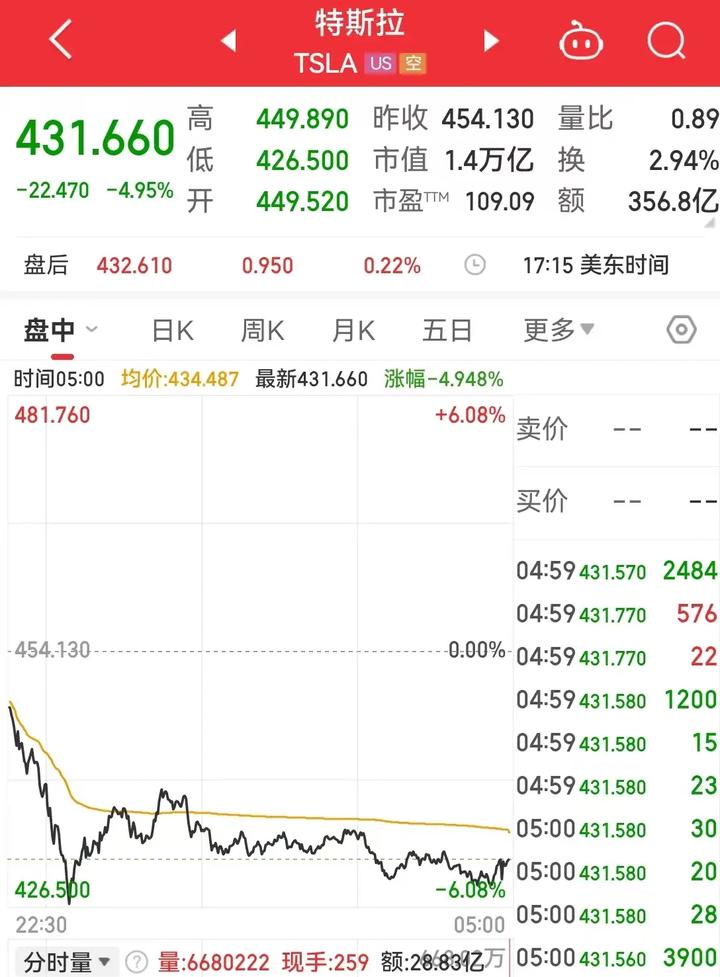Market Turmoil: Understanding Tesla's Sharp Decline and Wall Street's Anxiety
Tesla led a broad market selloff, plunging nearly 5% and erasing $72.1 billion in market value, as major tech stocks declined and investors grappled with uncertainties around interest rates and economic indicators heading into 2024.

The U.S. stock market experienced significant turbulence as Tesla’s dramatic decline highlighted growing concerns among investors. The electric vehicle giant’s nearly 5% drop, which wiped out $72.1 billion in market value in a single day, served as a stark reminder of the market’s current vulnerability.
The broader market followed Tesla’s downward trajectory, with the Nasdaq falling 1.49%, the S&P 500 declining 1.11%, and the Dow Jones dropping 0.77%. This widespread selloff affected other major technology companies, with industry leaders like Apple, Microsoft, Netflix, Google, and Amazon all falling by approximately 1%.
This market reaction reflects deeper underlying factors beyond mere price movements. The technology sector, which has been the primary driver of market gains, shows signs of strain after an exceptionally strong run. The Nasdaq 100 has surged roughly 85% since the launch of ChatGPT, with the “Magnificent Seven” tech stocks collectively gaining about 200%.
Market experts point to several key concerns. Prime Capital Financial’s portfolio manager Clayton Ellison notes a growing sense of caution among investors as they approach year-end, particularly with the upcoming political transitions in 2024. The market’s valuation metrics have reached concerning levels, with the S&P 500’s price-to-earnings ratio approaching 38, a level last seen during the late 1990s tech bubble.
Warren Buffett’s recent investment behavior provides an interesting perspective on current market conditions. Berkshire Hathaway’s cash reserves reached a record $325.2 billion in Q3, suggesting caution from one of the world’s most successful investors. This substantial cash position indicates concerns about current market valuations and potential risks.
The Federal Reserve’s stance on interest rates continues to influence market sentiment. While recent commentary from Fed officials suggests optimism about avoiding a recession, questions remain about the pace and timing of potential rate cuts in 2024. This uncertainty adds another layer of complexity to market dynamics.
Treasury Secretary Janet Yellen’s recent warning to Congress about the debt ceiling adds another dimension of concern. The Treasury Department may need to implement extraordinary measures between January 14-23, 2024, highlighting underlying fiscal challenges that could impact market stability.
For international investors, these developments in the U.S. market carry particular significance. The combination of high valuations, monetary policy uncertainty, and fiscal challenges creates a complex environment that requires careful consideration of entry points and risk management strategies.
The market’s reaction to these factors suggests a potential shift in sentiment from the unbridled optimism that characterized much of 2023. While long-term prospects for quality companies remain positive, the immediate future may require more nuanced investment approaches and greater attention to fundamental factors rather than momentum-driven strategies.